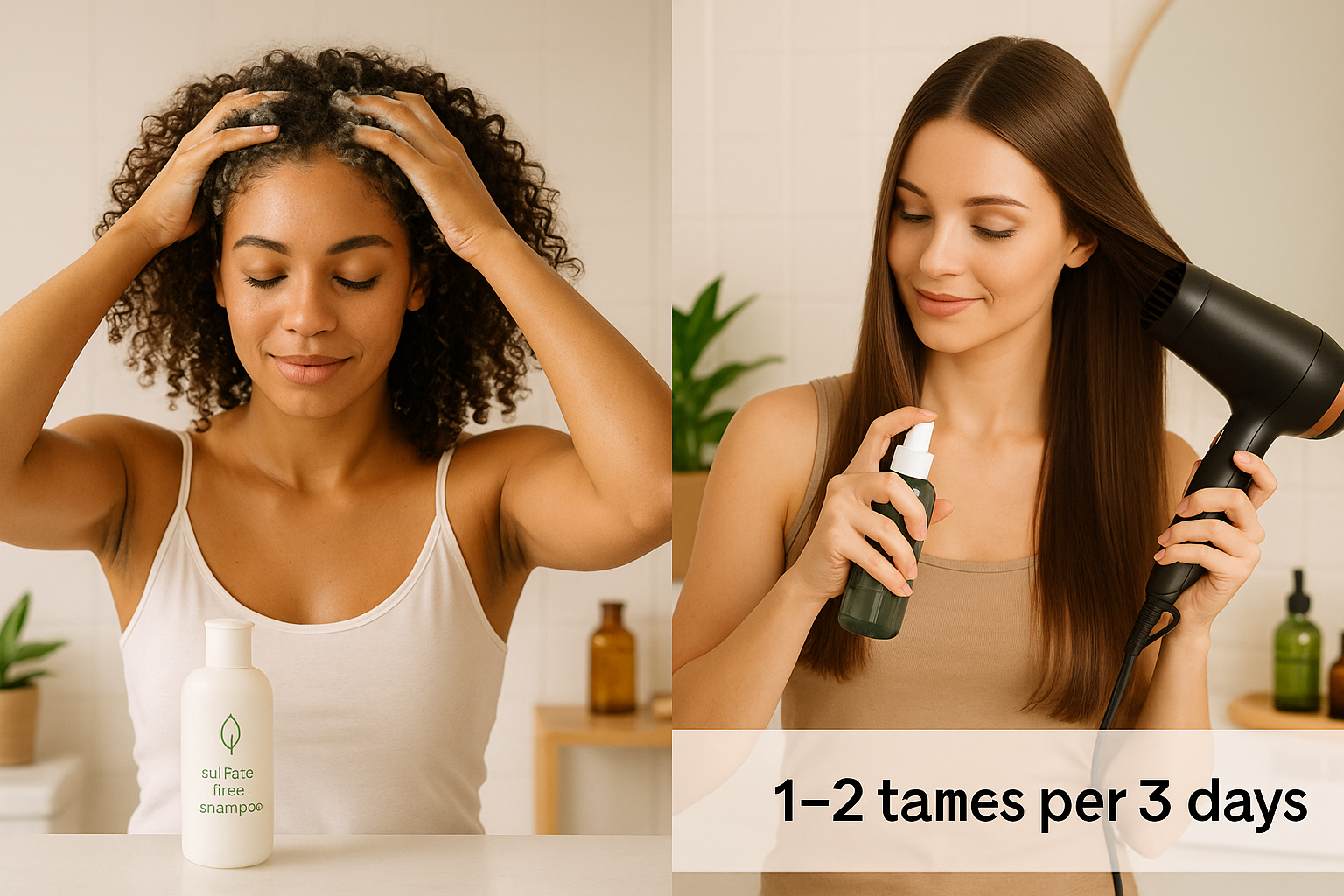
1. Why Washing Frequency Matters
Hair washing isn’t just about cleanliness — it’s about balance. Every hair type produces natural oils (sebum) at a different rate. Straight hair lets these oils slide down the strand easily, making it oily faster. Curly hair’s bends and coils slow that process, leaving the ends drier.
That’s why your best-friend-with-straight-hair might need to wash daily, while your curls look best when washed once or twice a week.
2. How Often Should You Really Wash Curly vs Straight Hair
Let’s get straight (and curly) to the point.
| Hair Type | Ideal Wash Frequency | Why It Works |
|---|---|---|
| Curly Hair | 1–2 times per week | Keeps natural oils and hydration intact; prevents dryness and frizz. |
| Wavy Hair | Every 2–3 days | Balances oil and moisture; avoids limp texture. |
| Straight Hair | Every 1–2 days | Prevents scalp oil buildup and flatness. |
👉 Focus Keyword used naturally at start: how often should you really wash curly vs straight hair depends on your texture, scalp type, and environment. There’s no universal rule — it’s about finding your hair’s sweet spot.
3. What Happens If You Wash Too Often (or Not Enough)
- Overwashing curly hair strips its natural moisture barrier, leading to brittle ends, tangles, and frizz.
- Underwashing straight hair can make your scalp greasy, heavy, and dull.
- Skipping conditioner is a mistake for both — hydration keeps your scalp balanced, no matter your texture.
📎 External DoFollow Link: American Academy of Dermatology – Hair Washing Guidelines
4. Key Factors That Affect Wash Frequency

Several personal and environmental factors decide how often you should wash:
A. Scalp Type
Oily scalp? You’ll likely need more frequent washes, especially for straight hair.
Dry scalp? Reduce washing days and focus on gentle, moisturizing cleansers.
B. Activity Level
If you work out daily or live in a humid city like Dubai or Doha, sweat and buildup may require an extra mid-week rinse.
C. Hair Thickness
Thicker curls can go longer between washes since they absorb oils more evenly, while fine straight hair gets greasy faster.
D. Product Usage
Heavy stylers (like gels, creams, or oils) can cause buildup. Clarify your scalp once a week to keep it fresh and healthy.
5. Signs It’s Time to Wash Your Hair
- Scalp feels itchy or heavy
- Roots look flat or oily
- Curls lose definition or volume
- Unpleasant odor or product buildup
- Hair feels coated or sticky
💡 Pro Tip: When in doubt, touch your scalp — if it feels greasy rather than hydrated, it’s wash time.
6. Regional Advice: Gulf vs U.S. Climate
Climate changes everything about how often should you really wash curly vs straight hair.
In the Gulf (UAE, KSA, Qatar, Oman):
- Curly hair: Stick to weekly washes with hydrating, sulfate-free formulas; humidity can make curls frizz-prone.
- Straight hair: Wash every other day to prevent oil buildup from heat and sweat. Use light, silicone-free shampoo.
In the U.S.:
- Colder seasons: Wash less often to prevent dryness.
- Summer heat: Alternate between cleansing shampoo and co-washing (using conditioner only) to keep balance.
7. Expert Tips for a Healthier Routine
- Use lukewarm water, not hot — it preserves moisture and shine.
- Massage your scalp for 2 minutes during each wash to boost circulation.
- Always follow shampoo with conditioner, even for straight hair.
- Use a microfiber towel or cotton T-shirt to dry curls gently.
- Apply a heat protectant before blow-drying.
📎 External DoFollow Link: Healthline – How Often Should You Wash Your Hair?
8. Final Thoughts
The real answer to how often should you really wash curly vs straight hair is personal — your hair will tell you what it needs. Listen to your texture, observe how it reacts to humidity and products, and adjust your schedule accordingly.
Consistency, gentle care, and smart product choices always win over rigid rules.


Leave a Reply